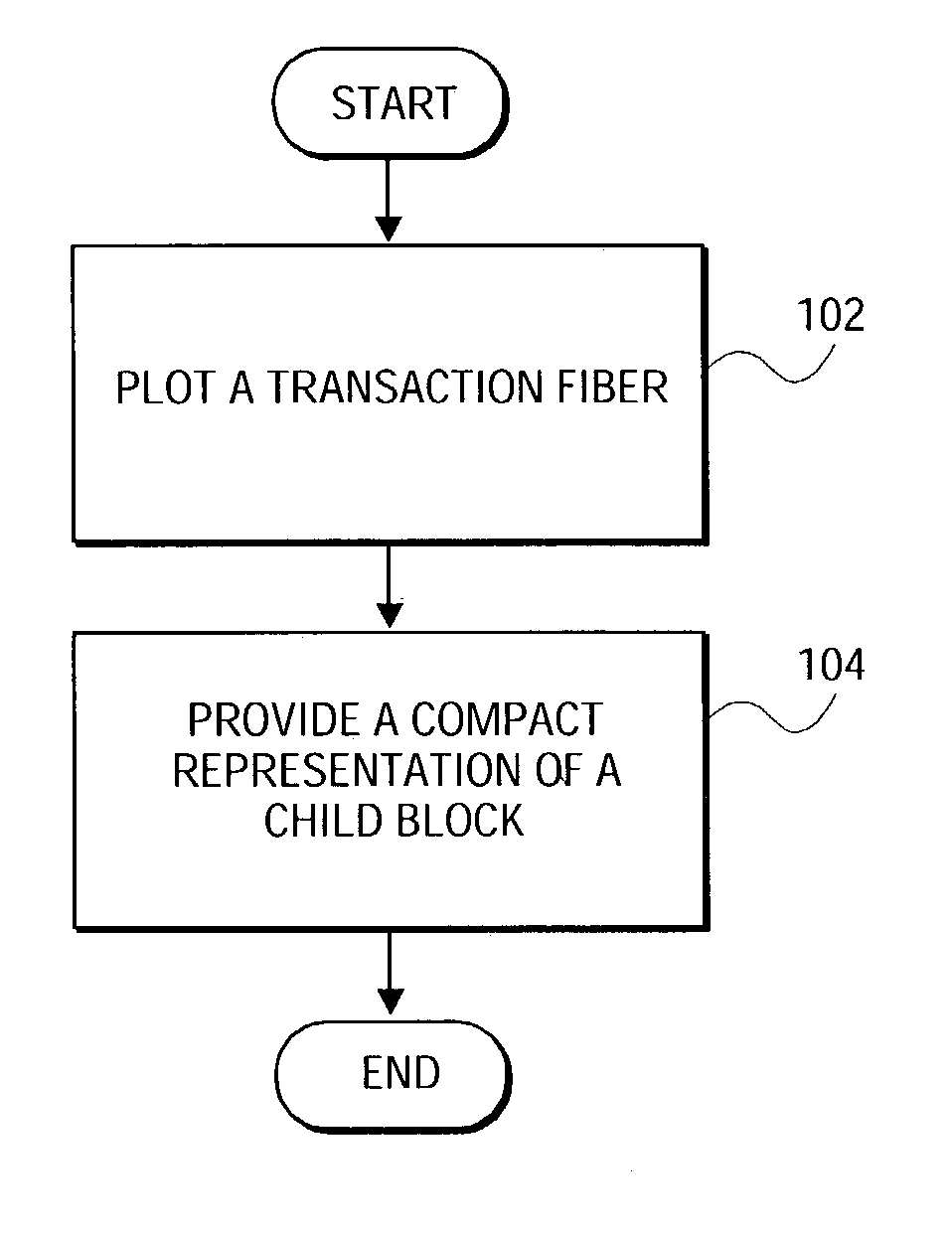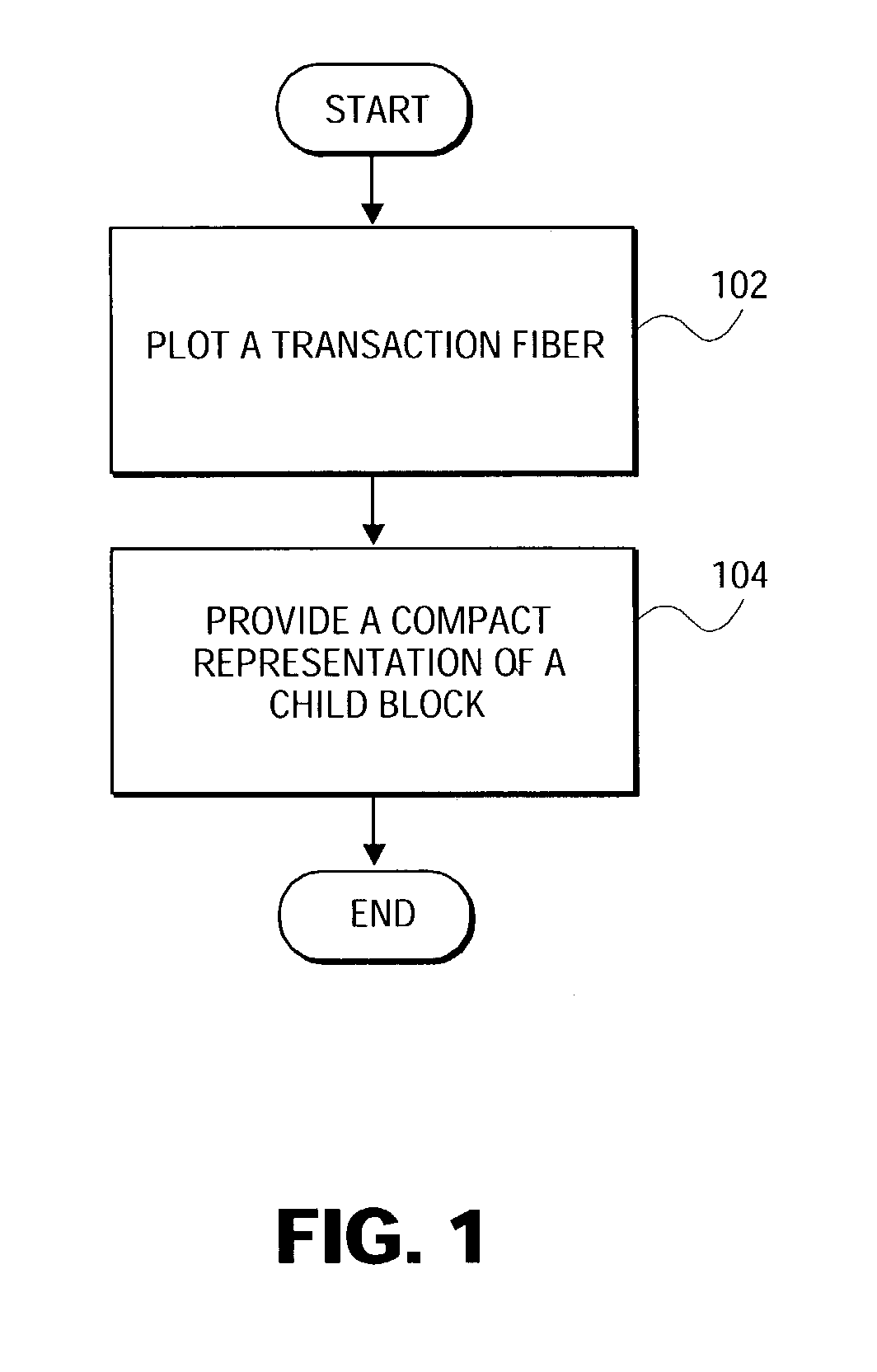Method and system for analyzing transaction level simulation data of an integrated circuit design
- Summary
- Abstract
- Description
- Claims
- Application Information
AI Technical Summary
Benefits of technology
Problems solved by technology
Method used
Image
Examples
Embodiment Construction
[0014]The present invention provides a method and system for analyzing transaction level simulation data of an integrated circuit design. FIG. 1 depicts a process flow diagram of an embodiment of the invention. In this embodiment, a transaction fiber is plotted (102). The transaction fiber comprises a transaction block. A compact representation of a child block of the transaction block is provided when the transaction fiber is in a collapsed state (104).
[0015]FIG. 2A shows a waveform window 200A in a simulation analysis tool displaying several transaction fibers in an expanded state in waveform area 242A according to an embodiment of the invention. In the embodiment, a minus sign on a button next to a fiber name signifies that the fiber is in an expanded state. For example, fiber if slv[0]202A, with a transaction block labeled “Protocol Thread”210, is in an expanded state as there is a minus sign on button 254A in signal list area 252A. Fiber 202A can be collapsed by clicking on but...
PUM
 Login to View More
Login to View More Abstract
Description
Claims
Application Information
 Login to View More
Login to View More - R&D
- Intellectual Property
- Life Sciences
- Materials
- Tech Scout
- Unparalleled Data Quality
- Higher Quality Content
- 60% Fewer Hallucinations
Browse by: Latest US Patents, China's latest patents, Technical Efficacy Thesaurus, Application Domain, Technology Topic, Popular Technical Reports.
© 2025 PatSnap. All rights reserved.Legal|Privacy policy|Modern Slavery Act Transparency Statement|Sitemap|About US| Contact US: help@patsnap.com



